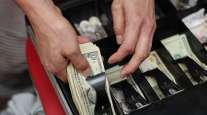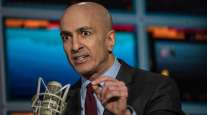Fed Economists ‘No Longer Forecasting a Recession’

[Stay on top of transportation news: Get TTNews in your inbox.]
WASHINGTON — The Federal Reserve raised its key interest rate July 26 for the 11th time in 17 months, a streak of hikes that is intended to curb inflation but that also carry the risk of going too far and triggering a recession.
The move lifted the Fed’s benchmark short-term rate from roughly 5.1% to 5.3% — its highest level since 2001. Coming on top of its previous rate hikes, the Fed’s latest move could lead to further increases in the costs of mortgages, auto loans, credit cards and business borrowing.
Though inflation has eased to its slowest pace in two years, this hike reflects the concern of Fed officials that the economy is still growing too fast for inflation to fall back to their 2% target. With consumer confidence reaching its highest level in two years, Americans keep spending — crowding airplanes, traveling overseas and flocking to concerts and movie theaters. Most crucially, businesses keep hiring, with the unemployment rate still near half-century lows.
In a statement, the Fed said the economy “has been expanding at a moderate pace,” a slight upgrade from its assessment in June.
Speaking at a news conference, Chair Jerome Powell revealed that the Fed’s staff economists no longer foresee a recession. In April, the minutes of the central bank’s March meeting had revealed that the staff economists envisioned a “mild” recession later this year.
“Given the resilience of the economy recently,” he said, “they are no longer forecasting a recession.”
A key question swirling around the Fed is whether this increase will be its last or whether it will hike again later this year. Speaking at a news conference after the Fed announced its latest hike, Powell said the central bank has made no decisions about any future rate increases. But he made clear that the fight against inflation isn’t over.
“The process of getting inflation down to 2% has a long way to go,” Powell said.
Federal Reserve Chair Jerome Powell says that Fed staff are no longer forecasting a recession https://t.co/WgREvExCSm pic.twitter.com/4eYSvB75hm — Bloomberg (@business) July 26, 2023
He stressed that the Fed’s policymakers will assess a range of incoming economic data in determining what action, if any, to take at their next policy meeting. When the officials last met in June, they signaled that they expected to raise rates twice more. By the time they meet again Sept. 19-20, Powell noted July 26, they will have much more data in hand: two more inflation reports, two reports on hiring and unemployment and updated figures on consumer spending and wages.
Some economists think the Fed might decide to forgo a rate increase in September before weighing a possible hike at its meeting in November.
In recent weeks, several Fed officials have said they worry that the still-brisk pace of job growth will lead workers to demand higher pay to make up for two years of inflationary prices. Sharp wage gains can perpetuate inflation if companies respond by raising prices for their customers.
At the same time, the steady easing of inflation pressures has lifted hopes that the Fed can pull off a difficult “soft landing,” in which its rate hikes would continue to cool inflation without sending the economy tumbling into a painful recession.
Economists at Goldman Sachs have downgraded the likelihood of recession to just 20%, from 35% earlier this year. Those at Deutsche Bank, among the first large banks to forecast a recession, have also been encouraged by the economy’s direction, though they still expect a downturn later this year.

Luzzetti
Matthew Luzzetti, Deutsche Bank’s chief U.S. economist, has pointed to durable consumer spending as a key driver of growth. Many Americans still have savings stemming from the pandemic, when the government distributed stimulus checks and people saved by spending less on travel, restaurants and entertainment.
Hiring has remained healthy, with employers having added 209,000 jobs in June, with the jobless rate reaching an ultra-low 3.6%. That’s about where it was when the Fed began raising rates in March 2022 — a sign of economic resilience that almost no one had foreseen.
Year-over-year inflation in June was 3%, according to the government, down sharply from a peak of 9.1% in June 2022. One cautionary note is that a “core” inflation measure that is preferred by the Fed, which excludes volatile food and energy costs, was still up 4.6% in May from a year earlier.
“Core is still quite elevated,” Powell said.
Some Fed officials, including Christopher Waller, an outspoken member of its Board of Governors, and Lorie Logan, president of the Federal Reserve Bank of Dallas, have said they think the cumulative effects of the previous rate hikes have already been baked into the economy. With inflation still above the Fed’s target, they think additional hikes may be needed to further slow price pressures.

How effective have third-party services proved to be for fleets? Let's find out with Michael Precia of Fleetworthy Solutions and Dan Rutherford with Summit Virtual CFO by Anders. Tune in above or by going to RoadSigns.ttnews.com.
Powell echoed that point. The Fed’s rate hikes, he said, have “not been restrictive enough for long enough” to exert their full effect.
“The process still has a long way to go,” he said.
Some analysts caution that the drop in year-over-year inflation from roughly 9% to 3% was the relatively easy part. Getting it down to the Fed’s 2% target will be harder and take longer.
Want more news? Listen to today's daily briefing below or go here for more info:




